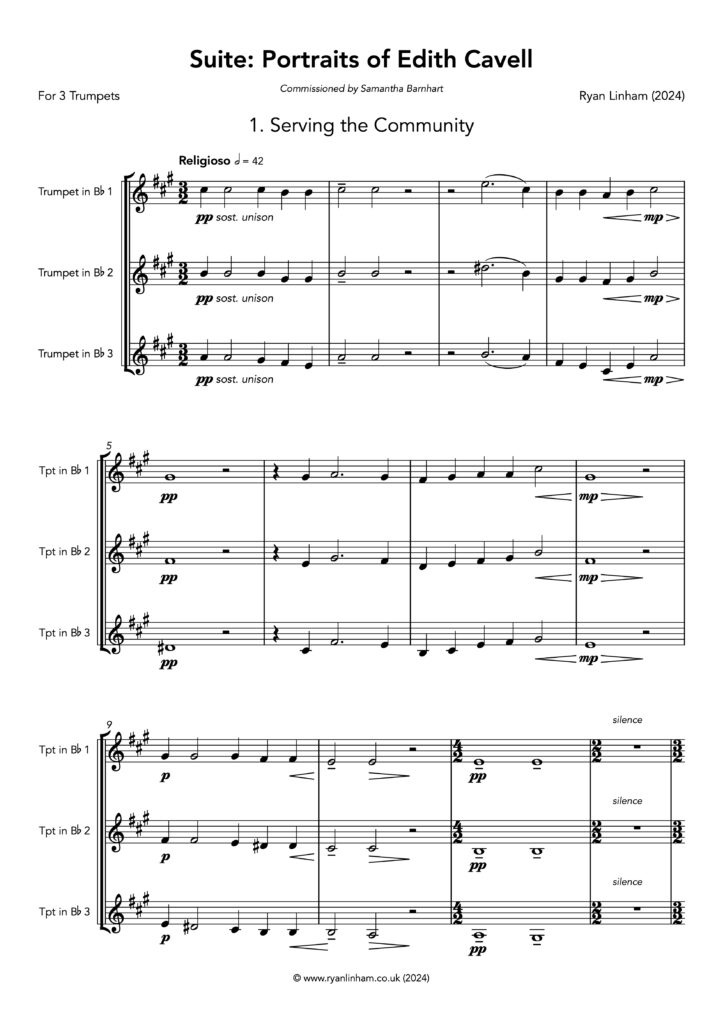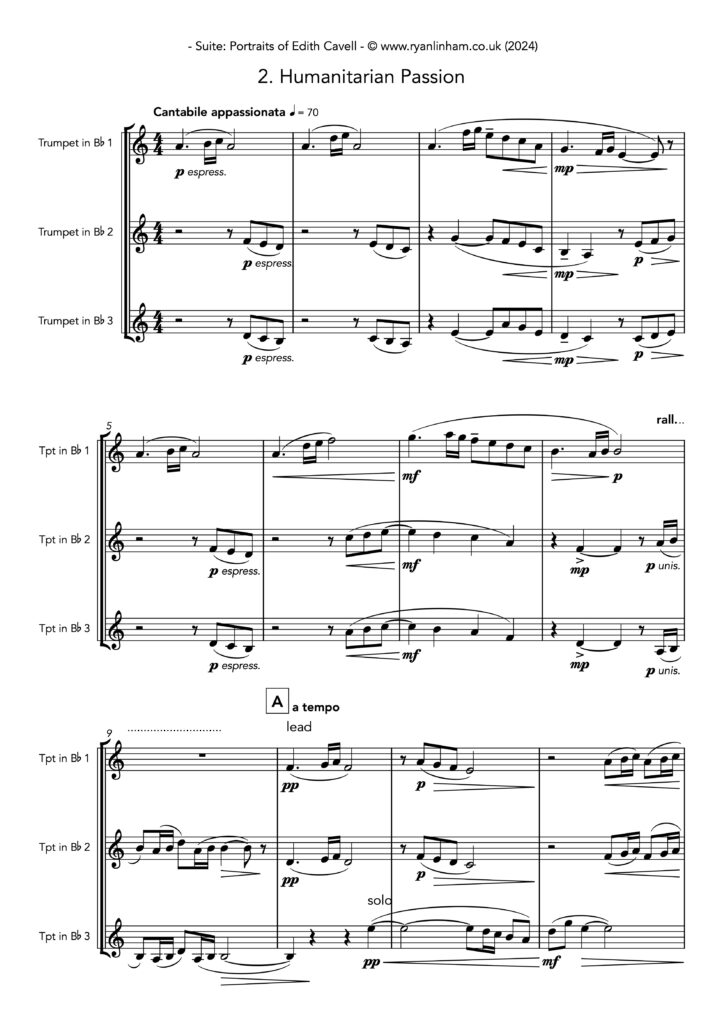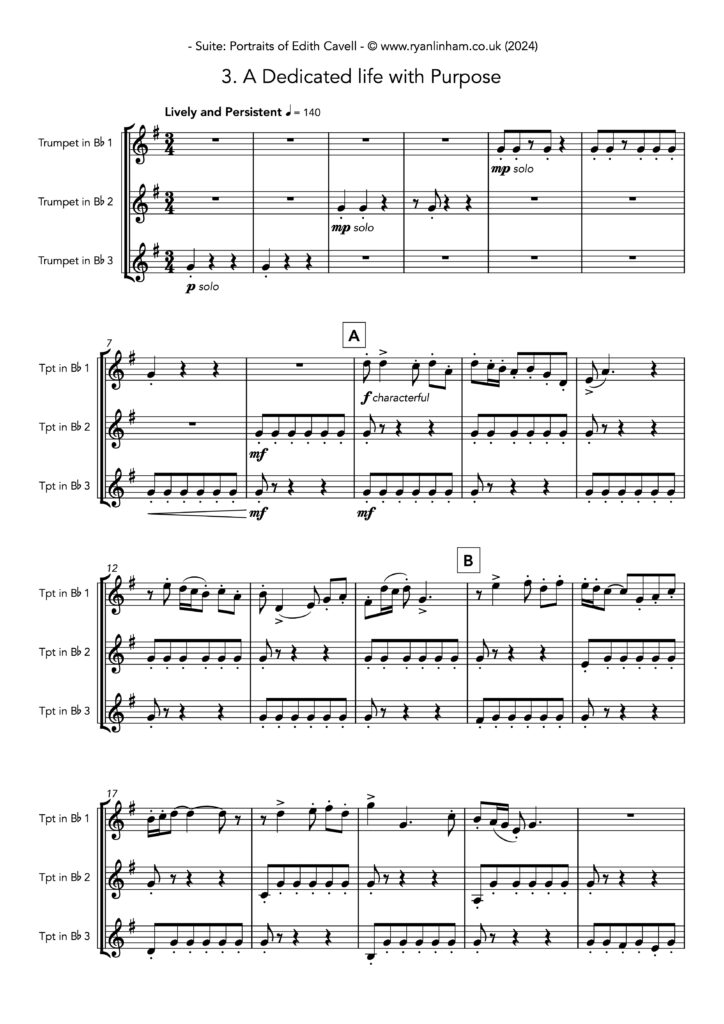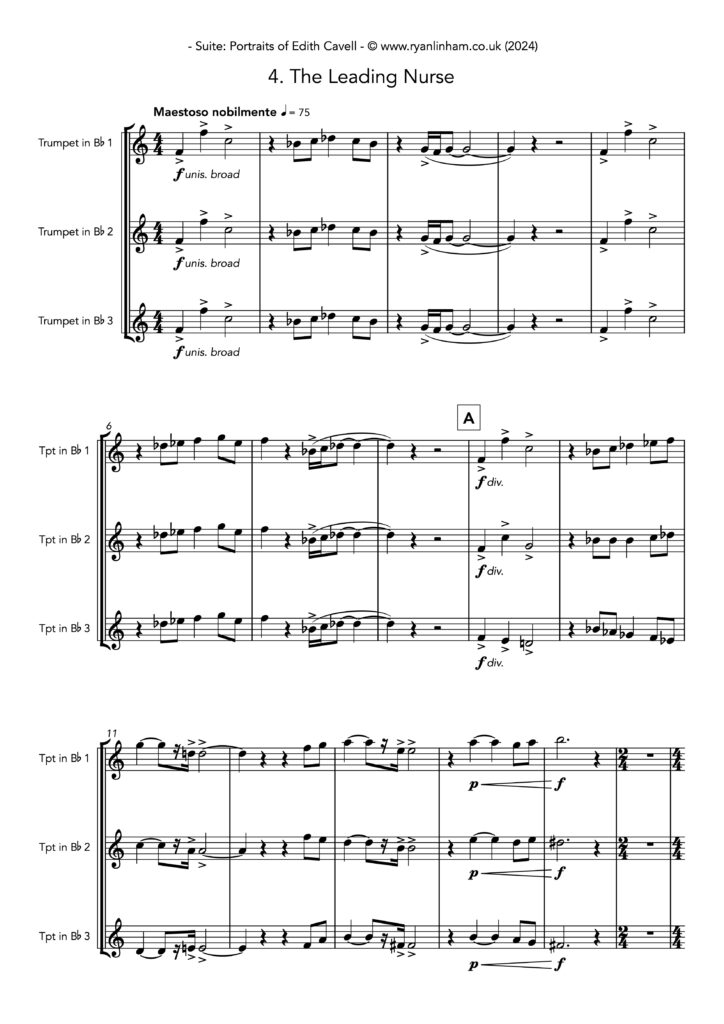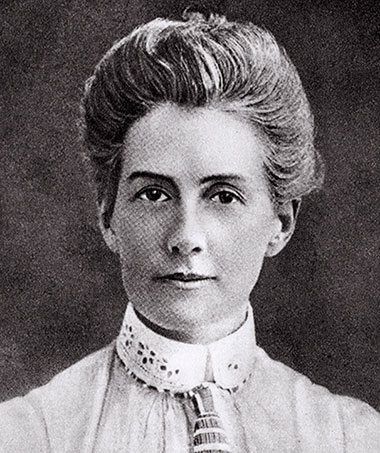Duration: 4 Movements, 12 Minutes
Price: £30
Grade: 6-8
Instrumentation: Trumpet/Cornet Trio
Commissioned by Samantha Barnhart and the PTC Record Label
With many thanks to the contributors and informants:
Sarah Paterson, Curator (First World War/Early 20th Century) Imperial War Museum
The Revd Dr Peter Doll, Canon Librarian and Vice-Dean, Norwich Cathedral
Howard Spencer, Senior Historian, English Heritage
This collaboration with the PTC Record Label and professional classical trumpet players was commissioned in late 2023 and composed to honour the legacy and extraordinary life of Edith Cavell. The piece aims to highlight her personal strengths as well as her exceptional endeavours as a nurse, her dedication to humanity in the face of war and her sacrifices and martyrdom. A recording of selections from the suite is set to be released as a new, refreshed tribute to her significance in British history and relevance to our world today.
Programme Notes:
I. Serving the Community
This movement is written as a prayer to the kind act of giving. Reflective, religious and pensive, it highlights Cavell’s background in community service considering that her father was a vicar at Norwich Cathedral, which involved local charity and outreach work. The end of the movement facilitates the hymn tune ‘Abide with Me’: the prayer that is associated with her execution. This chorale-type church music is to elevate her to the level of her saint-like values: “I must have no hatred or bitterness for anyone.”
Ideally this is to be performed in a large reverberant acoustic, with the performers close together for ensemble but hidden from the audience for etherial ambience. Reverential yet sad, to reflect her tragic execution. After performing, slowly move back to an audience-friendly visible position, allowing as much time as is needed.
II. Humanitarian Passion
The second movement of this work is written in a modal English style with cornet-like lines and expressive sweeping melodies reflecting a depth of passion. Heartfelt yet reserved, the music should reflect the serious nature of her humanitarian work. The soundscape is tinged with sadness connected to the grave and difficult experiences of helping others in severe need. The musical themes play with tension and release, otherwise interpreted as positive and negative waves of sound to symbolise the turbulence of life’s wins and losses when doing good for others. The movement is written in Rondo form which returns continually to a main theme which is developed increasingly each time, much like the commitment and determination to overcome life’s hardships, which in turn creates a steady developmental narrative. The grand climax depicts the same passion in the heat of war.
To be performed in a concert setting, visible and together front of stage for the audience.
III. A Dedicated Life of Purpose
Acting as a scherzo, this movement features unrelenting rhythmic ostinati patterns and syncopations that continually push forwards. Resolute with just one key-centre to signify unwavering dedication, this ‘moto perpetuo’ could seemingly continue forever, much like the work and legacy of Cavell. The uneven beating patterns (beginning with the 3 bar phrases) always keep the music on the front foot, as well as the light sparkling quaver motifs that sustain the work. It is to be played as metronomically as possible at one tempo with no fluctuations.
IV. The Leading Nurse
The final movement is written as a tribute to the pioneering work Cavell contributed to advance the nursing profession. To be played antiphonally with all 3 players in far-reaching corners of the concert venue, these powerful yet serious musical statements create quasi-fanfares of nobility, proudly surrounding the audience from all sides. The unison in the opening reflects her lone efforts as a woman in this difficult era. The musical language inspired by Walton’s compositions about royalty.
Additional note about the whole Suite:
The ‘fixed tone’ of this work gradually descends throughout the movements through A, then G, to F and finally the chord of Eb. This harmonically explores the depressing nature of Cavell’s sacrifice and difficult life, ending tragically in martyrdom.
Notes on Edith Cavell:
Edith Cavell (1865-1915) was a pioneering British nurse celebrated for her heroic efforts to save hundreds of lives during the First World War. Primarily a dedicated nurse and educator in the emerging nursing profession at the time, she was working at a hospital in Belgium during the German occupation. Born in Norfolk County, the daughter of a rector, she gained a passion for service and desire for a purpose from an early age. It was this commitment and humanitarianism, for which she was seen as a progressive leader in the nursing profession, that led to bravely aiding soldiers from both sides during World War I. She helped soldiers and civilians that she treated in the hospital escape the war as she sheltered them and arranged guides to take them to the neutral Netherlands. Edith Cavell was arrested for her activities, tried, found guilty, and sentenced to death. On 12 October 1915, she was shot and killed in Brussels. To this day, Edith Cavell is revered as a heroine, leader, humanitarian, and self-sacrificing, passionate woman. “Patriotism is not enough. I must have no hatred or bitterness for anyone.” – Edith Cavell
The stories of history can be told in many different ways, each one catching the ear of a new listener. Telling Edith Cavell’s story through music transports the listener to that time and place of her life story and martyrdom, creating space inwards for imagination to grow and emotion to form. Portraits of Edith Cavell was commissioned to further her legacy of heroism and highlight a female historical figure from a time when women around the world were making an impact through service and dedication but might not have received the acknowledgement or place in history that they deserved.
PTC Record Label Performance:
Sample Scores:
